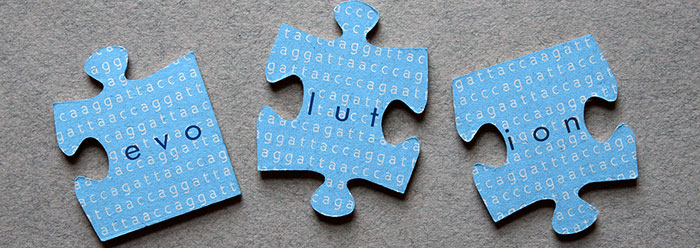Secular geneticists continue to claim that humans did not come from a literal Adam and Eve.1 But if clues in the human genome do not reject Adam from our ancestry, then why would scientists insist that he was not real?
A University of Sheffield news release titled “Putting ‘Adam’ in his rightful place in evolutionary history” introduced efforts led by professor Eran Elhaik to refute the confusing results of a 2013 report showing that the male ancestors of humanity predated the female ancestors by hundreds of thousands of years.2
To be clear, the media have borrowed the name Adam as a convenient reference to an ancestral male genotype found across an entire ancient population. They don’t refer to the biblical Adam in any literal sense. Elhaik in particular “doesn’t believe that Moses, Aaron, or the 12 tribes of Israel ever existed,” let alone ancient Adam.3
At least he is consistent—if Adam was not real, then all of Scripture is called into question since the core historical events it records and the core spiritual truths it communicates all rely on a literal Adam: “For as in Adam all die, even so in Christ all shall be made alive.”4
Why not believe in Adam? Do we have genetic features that preclude the existence of the progenitor of all humanity?
The short answer is no. Secular population geneticists consistently insist on using historical models that reject Adam and Eve out of hand. For example, the authors of the paper that Elhaik rebutted, published in The American Journal of Human Genetics, assumed that humans evolved from a chimp-like ancestor when they constructed their supposed timeline. They wrote, “The ancestral state of each polymorphic [different DNA] site was inferred with pairwise alignments between the human and chimpanzee reference sequences.”5
For them, chimpanzees have replaced Adam.
And even Elhaik’s rebuttal “used conventional biological models to date our most common male ancestor ‘Adam’ in his rightful place in evolutionary history.”2 “Conventional” dogma ensures evolution, and “models” based on it interfinger measurements with evolutionary assumptions. This stance rejects biblical history not because of data, but before the data are even approached.
Dogmatic insistence on evolution no matter the data isn’t new. Last year, when Elhaik and his former supervising professor, Dan Graur, tried to put the spectacular ENCODE results into their proper evolutionary place, they only succeeded in showing that baseless assertions, unscientific rhetoric, and circular arguments masked unfounded evolutionary assumptions.6
In contrast to dogma-first models that replace a recent Adam with eons of apes, a new data-first study of mitochondrial DNA reports that mankind only carries a few thousand years’ worth of polymorphic sites—consistent with biblical history.7
Both atheistic and theistic evolutionists believe they must toss Adam under the evolutionary bus to preserve the past they prefer, but they certainly have no scientific reason to do so. The data continue to support a recent creation of the man Adam from whom all humanity descended.
References
- If they are right, then they must know better than Jesus, who referred to the first couple as real people. See Mark 10:6.
- Putting ‘Adam’ in his rightful place in evolutionary history. University of Sheffield news release. Posted on sheffield.ac.uk January 22, 2014, accessed January 29, 2014.
- Rubin, R. ‘Jews a Race’ Genetic Theory Comes Under Fierce Attack by DNA Expert. The Jewish Daily Forward. Posted on forward.com May 7, 2013, accessed January 29, 2014.
- 1 Corinthians 15:22.
- Mendez, F. L. et al. 2013. An African American Paternal Lineage Adds an Extremely Ancient Root to the Human Y Chromosome Phylogenetic Tree. American Journal of Human Genetics. 92 (3): 454-459.
- Jeanson, N. and B. Thomas. The Resurrection of ‘Junk DNA’? Creation Science Update. Posted on icr.org March 20, 2013, accessed January 29, 2014.
- Jeanson, N. 2013. Recent, Functionally Diverse Origin for Mitochondrial Genes from ~2700 Metazoan Species. Answers Research Journal. 6: 467-501.
* Mr. Thomas is Science Writer at the Institute for Creation Research.
Article posted on February 14, 2014.


















